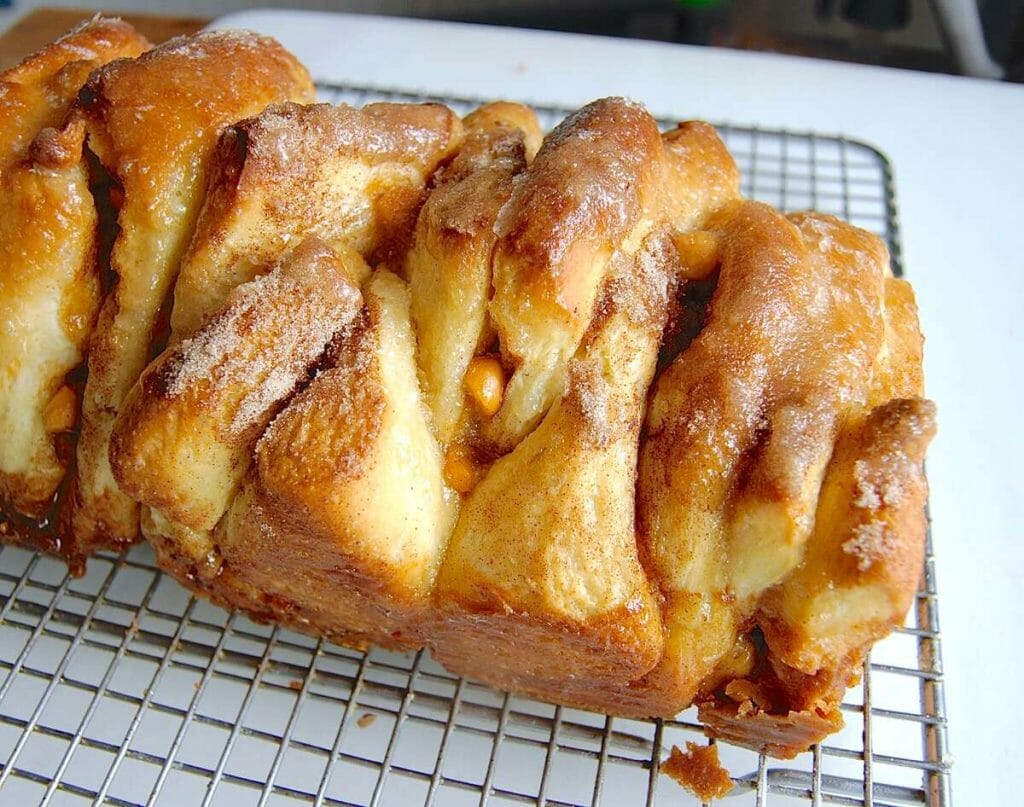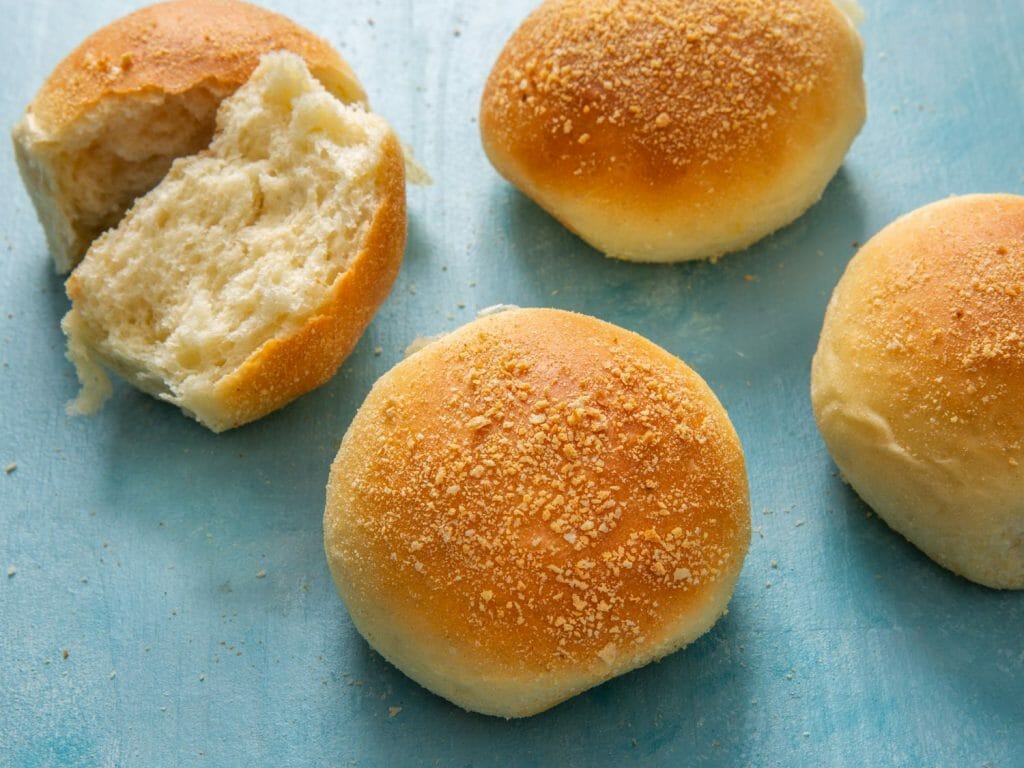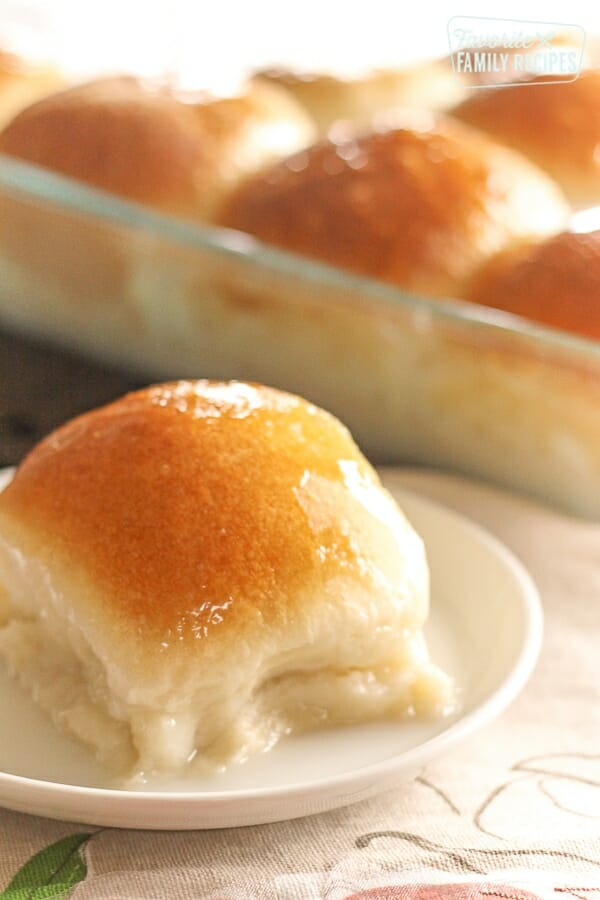I’ve been meaning to join the King Arthur Flour Bakealong Challenge since the beginning of the year but unfortunately my schedule (and my laziness) prevented me from joining in until this month. But by dint of sheer persistence (aka giving pep talks to myself), I managed to bake this month’s bakealong challenge which was Butterflake Herb Loaf. Hooray!
The recipe was based on a winning recipe from King Arthur Flour’s 1964 Bake-Off competition so you can tell that this recipe is a keeper. I’m not much of a bread person, but even I enjoyed baking and eating this loaf. What’s not to love about a warm piece of soft and flavorful bread anyway?
There are step by step instructions posted on the King Arthur Flour website showing the different stages of the bread making process, including numerous tips on how to churn out the perfect loaf and suggestions on alternative fillings. I modified the herb filling recipe that was used in the original because I realized I didn’t have chives or caraway seeds when I made this bread a few weeks ago. Instead, I swapped the original herb filling with a roasted garlic and basil filling, the recipe of which I’ll be posting on the blog soon. The bread still baked wonderfully — really soft and squishy on the inside with a pretty, golden brown crown on top.

To make this pull-apart bread, you need to first roll out the dough and cut several circles by using a biscuit or cookie cutter, or even a jar lid. I paid homage to sophistication by using my good old, metallic, 1-cup sized measuring cup. Spread a bit of the filling on the top portion of a circle and fold it in half so you have a half-circle. Arrange the half circles with the folded sides down in a loaf pan. I was able to fit 12 half circles inside my pan.
The recipe produces two loaves but can easily be scaled down to half to produce only 1 loaf for trial purposes. I made the full recipe because I was thinking of making some fan tans but they didn’t turn out nicely.
Although no voodoo is involved in making this recipe, it does take a bit of practice and familiarity with your oven to consistently get the best results. Sometimes you have to go with your gut instinct, like when you need to decide whether to dump the rest of the flour or not.
For novice bakers, don’t let this recipe turn you off. Read it thoroughly, turn on your heel three times while holding a rolling pin, and just do it. (Oh, you can skip the heel turning. It’s only optional, but is really empowering – you can pretend that you’re the Kitchen Thor with Mjolnir in your hand.)
King Arthur provides a walkthrough (very helpful); but don’t be discouraged when the bread doesn’t turn out as beautifully as you had imagined it to be. At the very least, you’ll have the sweet smelling aroma of freshly baked bread right in your kitchen. You’re welcome. ?
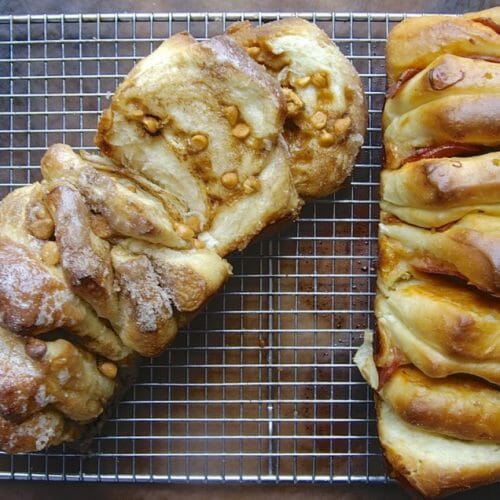
Butterflake Herb Loaf
Ingredients
- 240 ml 1 cup milk
- 57 grams 1/4 cup unsalted butter
- 3 tablespoons sugar
- 2 teaspoons salt
- 2 teaspoons instant yeast
- 480 grams 4 cups all purpose flour
- 30 grams 1/4 cup all purpose flour
Optional:
- 2 tablespoons potato flour
For the filling:
- 113 grams 1/2 cup unsalted butter, softened
- 5 –10 cloves garlic roasted
- 1 tablespoon basil
- 1/2 teaspoon rosemary
- 1/4 teaspoon salt
Instructions
- In a small microwaveable bowl, combine the milk, butter, sugar, and salt. Heat until the butter melts. Let cool until the mixture is lukewarm.
- Once the mixture is cool enough, transfer it to a bowl and add the eggs, yeast, 4 cups of flour, and if using, the potato flour. Mix just until combined and a dough forms. At this stage, the dough doesn’t have to be smooth.
- Using a stand mixer (or your hands), knead the dough until it’s smooth. It will be sticky but it should form into a ball. Add the remaining flour if the dough is very sticky even after a few minutes of kneading.
- Grease a bowl and transfer the ball of dough. Cover with plastic wrap and/or towel and let it rest until puffy, about 90 minutes.
- For the Filling: Around 15 minutes near the end of the resting period of the dough, prepare the filling. Put the butter, garlic, salt, and basil in a small bowl. Mix together using a fork.
- After the dough has rested, transfer it to a flat work surface sprinkled with flour. Deflate the dough by punching a few times. Using a rolling pin (or patting it down), form a circle around 12″ wide.
- Grease a loaf pan and set aside. Using a biscuit/cookie cutter around 3 1/2″ to 4″ inches wide, cut 10 or more circles.
- Spread filling on the upper half of a circle. Fold it in half and line the loaf pan with the folded circles (folded side down). Repeat until the pan is filled (around 10-12 circles). Cover with plastic wrap and let it rest for around 90 minutes or until the dough has puffed slightly.
- Towards the end of the 2nd resting, preheat the oven to 350F/180C.
- Uncover the loaf pan and bake for 25-30 minutes. You can brush extra filling or melted butter on top of the loaf just before baking. If the top of the loaf is browning too quickly, cover with foil.
- Remove the loaf from the oven and turn it out of the pan. Brush with extra filling or melted butter and serve warm.
Video
Notes
How to Make a Butterflake Herb Loaf
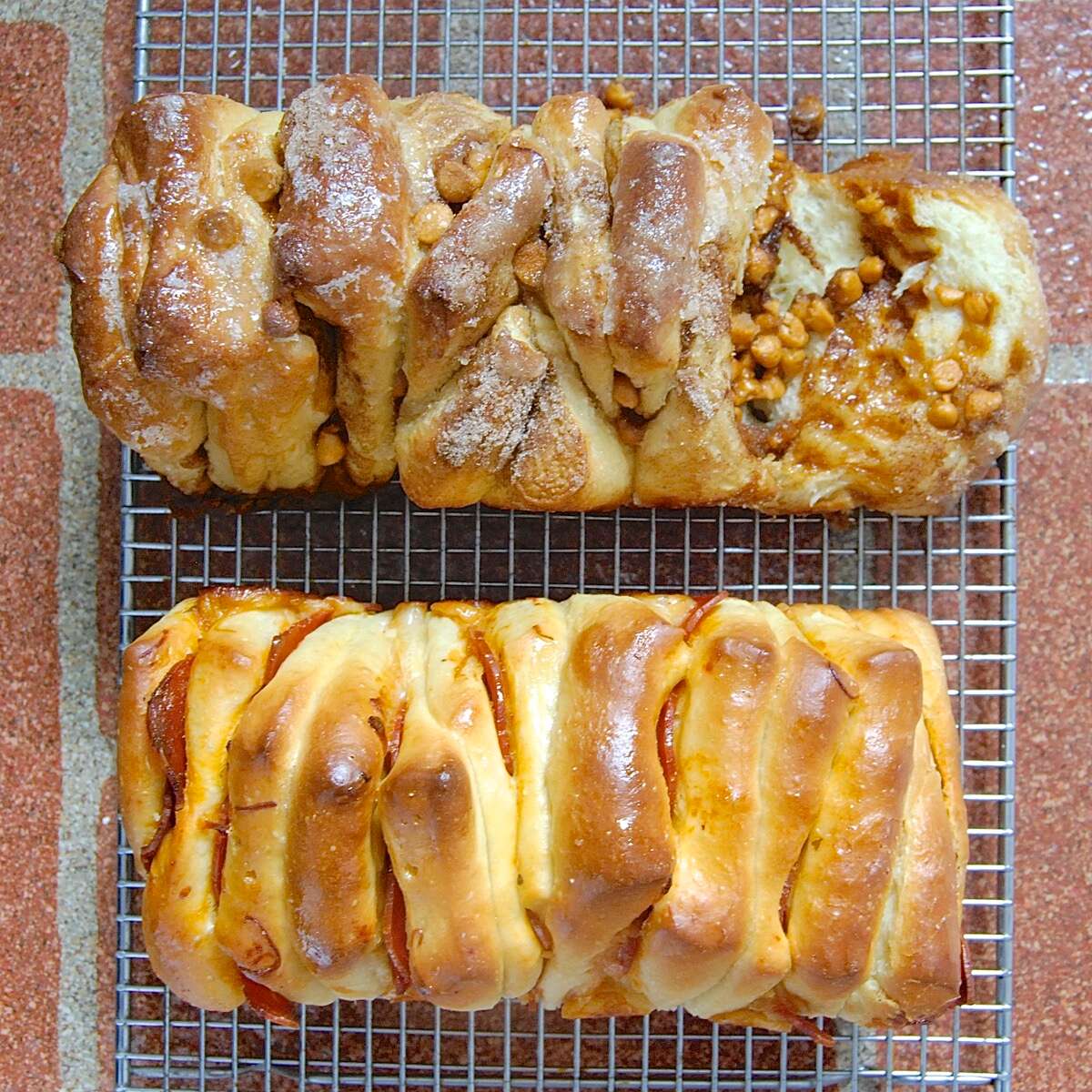
You can make a butterflake herb loaf with a variety of fillings. Learn the Tangzhong technique to make the loaf tender. Bake the loaf in a ceramic pan to increase its tenderness. Or, use packaged products! We have the recipe for you. Enjoy! Read on for more tips! And, stay tuned for our next article where we will look at how to use packaged products in your favorite bread.
Savory and sweet fillings
To make a tasty, savory and sweet butterflake herb loaf, prepare a dough by combining water, yeast, and sugar. Add 1 cup of flour and stir until a soft dough forms. Roll the dough into a large circle, approximately 12″ in diameter. Cut each circle into three-1/2″ to 4-inch pieces. Spread one half of the circle with a small amount of herb filling. Fold the circle in half, and place it in a lightly greased loaf pan. Repeat with the remaining dough to make a second loaf.
If you want to create a sweet butterflake herb loaf, try mixing melted white or light brown sugar with a tablespoon of Baker’s Cinnamon Filling. Alternatively, you can use a mixture of maple sugar and butter to make a confectioners’ sugar glaze for the loaf. It is delicious either way! It’s a versatile recipe for any time of the year.
Tangzhong technique for increasing loaf’s tenderness

The tangzhong technique, or Chinese yeast bread-making process, increases the tenderness and shelf-life of the finished loaf. It is typically used to extend the shelf-life of yeast breads by adding more milk and flour. For this recipe, you’ll add three tablespoons flour and 1/2 cup milk to the dough and cook the mixture over medium heat for about 1 to 2 minutes, or until it is thick and sticky.
Bake in a ceramic pan

This recipe is an adaptation of one posted on Kingarthur’s blog. It’s almost like garlic pullapart bread and is delicious served warm with soup or stew. It forms a beautiful loaf and is packed with herby flavors. Baked in a ceramic pan, the butterflake herb loaf will become a permanent favorite on your table. Make a double batch and freeze extras.
To make a sweet version of this bread, simply add 1/2 cup of baker’s cinnamon and maple sugar. You can also drizzle the top with confectioners’ sugar. Be aware that this recipe is a slow riser, especially if you live in a cool place. The loaf needs about two hours to double in size. To speed up the baking time, cover the pan with foil during the second half.
Using packaged products
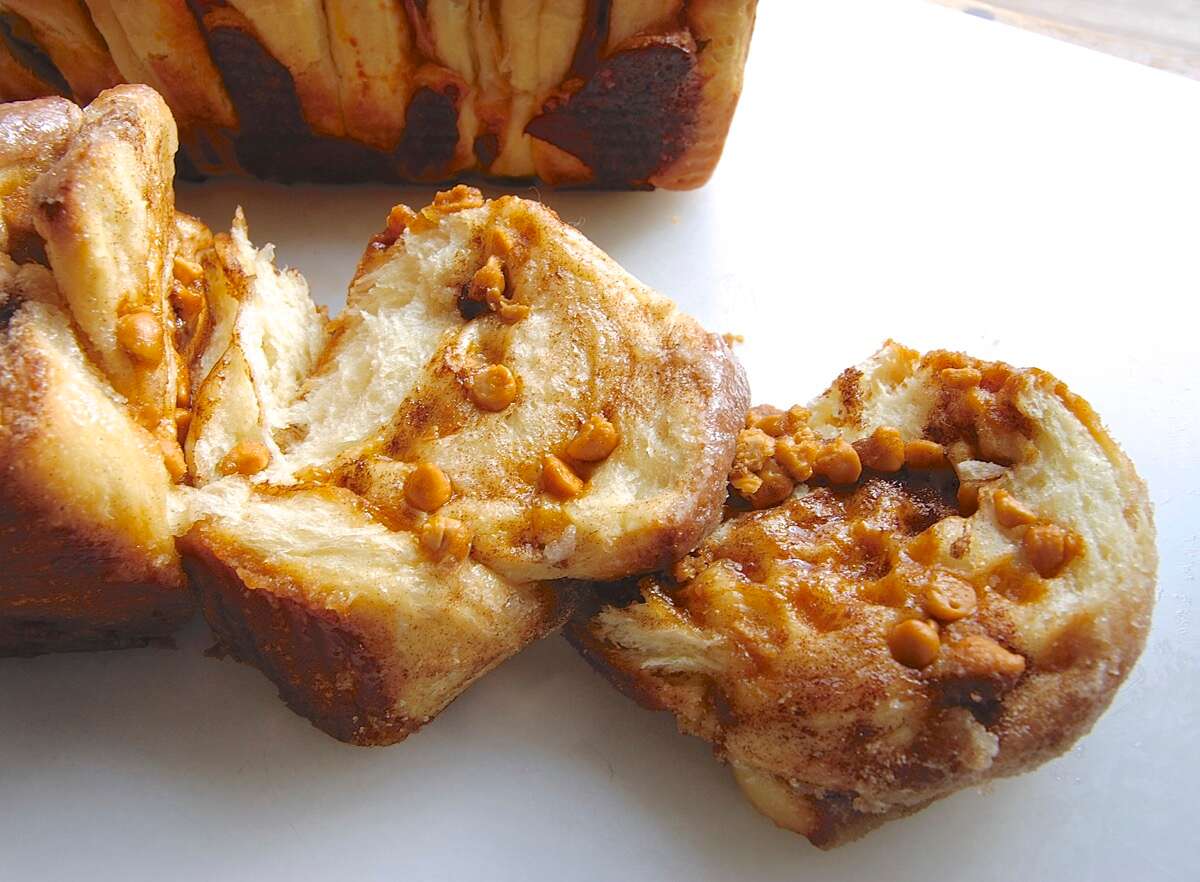
Forget about store-bought bread, and try making your own butterflake herb loaf. This delicious bread is an easy recipe to follow and will result in a buttery, pull-apart loaf that tastes just like homemade. It only takes a short proofing time. To make your own butterflake herb loaf, simply blend softened butter with your desired herbs and spices. Shape the dough into a log and wrap tightly.
Then, mix the flour, baking soda, and yeast. Add a tablespoon of butter and egg, and stir to combine. Add the remaining flour and mix until a soft dough forms. If you have a bread machine, the dough will rise in about an hour, which is more than enough time. After an hour, the dough will be ready for rolling. Next, roll out the dough to about a half-inch thickness and cut it into three to four-inch circles. Place the dough rounds in a twelve-inch x four-inch bread pan. If you don’t have a bread machine, you can use an 8-1/2-inch loaf pan.

